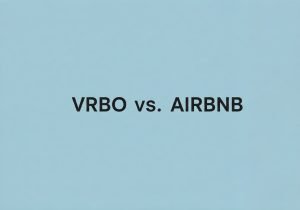This article describes how you can avoid breakouts when flying that are caused by the dry airplane cabin pressure. Eliminate airplane acne with this simple guide.
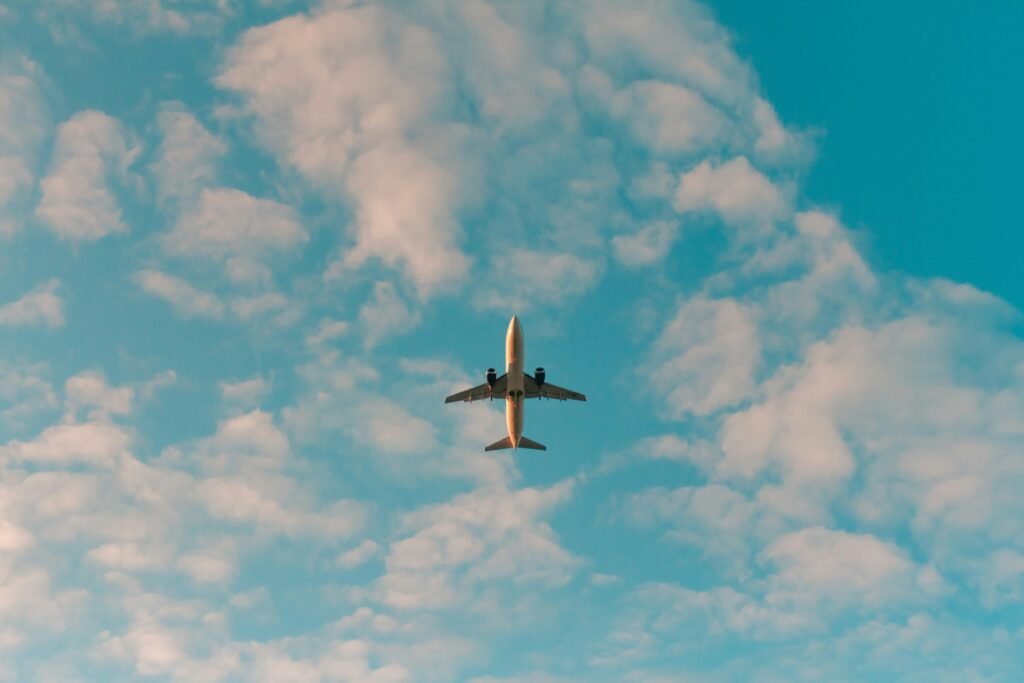
Flying – I love it and I hate it. It is so exciting to be off to a new destination, but the flight often comes with a lot of negatives. One of them is that I seem to always get breakouts after flying long distances. After talking with some other travelers, I’ve realized this is a common problem. It actually has a name: “airplane acne”.
The cause of airplane acne is the dry, recycled air of an airplane cabin. A lot of travelers struggle with breakouts caused by the dryness encountered at high altitudes.
I live in San Diego but have family that lives on the East Coast. This means that I am flying 6+ hours across the country frequently. As a result, I’ve had plenty of time to develop, test, and refine a skin care strategy to combat the dryness caused by airplanes and prevent breakouts when flying.
✈️ My Travel Essentials – What I Actually Use & Recommend! 🌍
I’ve traveled extensively and use these tools on every trip. They’ve saved me money, time, and headaches, and they’ll do the same for you! 👉 Book smarter & save more 🚀
✅ 🏨 Best Hotel Deals → Expedia
I book all my hotels through Expedia because they offer cash-back rewards and some of the lowest rates online. Tip: activate Rakuten for extra cashback and $30 free.
✅ 🎟️ Skip-the-Line Tours & Unique Experiences → Get Your Guide
Want to avoid lines and overpriced tourist traps? I use Get Your Guide to book skip-the-line passes, tours, and hidden gem activities. Use my link for 10% off your first booking!
✅ 📱 Stay Connected Without Roaming Fees → Airalo
No more SIM card hassle! I use Airalo’s cheap, reliable eSIMs to stay connected instantly in over 200 countries. Use my promo code AIRALOESIM10 for 10% off!
Short on time? Here’s the main takeaway:
Dry air in airplanes causes your skin to dry out and can lead to breakouts post-flight. Avoid this by following the steps in this guide: use a retinoid regularly, moisturize before, during, and after the flight, and cleanse as soon as you land. If you’re looking for which products to use, I’ve included them below.
Table of Contents
The Skin-Flight Connection: Why You Break Out After Flying
Airplane cabins are notorious for their low humidity levels, often dropping below 20%. Per the CDC, aircraft cabins are usually between 10% and 20% humidity. This starkly contrasts with the 30 to 60% humidity most of us are accustomed to on the ground. Over extended periods of time (such as flights over a few hours), the dry air can pull moisture from your skin, disrupting its natural barrier and leading to dehydration. In response, your skin may produce excess oil, clogging pores and leading to those dreaded breakouts.
Don’t worry though, I have a solution to airplane acne that I have tested and refined over the years, including which skincare products actually work best.

Step 1: Retinoid to the Rescue
The first step in avoiding breaking out after flying is consistently using a retinoid. Step 1 is the most important step of this process.
What Are Retinoids
Retinoids are a class of chemical compounds derived from vitamin A that are used in skincare. They are a powerful tool in the fight against breakouts and reduce the signs of aging. They work by speeding up cell turnover, preventing dead skin cells from clogging your pores. This results in reduced acne and diminished signs of aging. There are two main retinoids that you need to know about for the purpose of this article:
- Retinol
- Tretinoin
Retinol is a milder, over-the-counter form of vitamin A used in skincare for anti-aging and acne treatment, while tretinoin is a prescription-strength retinoid that is more potent and often used for more severe skin conditions. They both serve the same function. Tretinoin is stronger and more effective, but requires a prescription and can dry the skin out when not used correctly.
The truth about skincare that most companies don’t want you to know is that retinoids are one of the few ingredients out there that are actually scientifically proven to be effective in anti-aging. You can get a prescription retinoid, which makes it so you save money by only paying your insurance copay. Forget all the serums and overpriced products, all you need is a simple cleanser, moisturizer, retinoid, and sunscreen.
They don’t need to be expensive. For example, if someone tells you that you can’t use body lotion on your face, that is only because they want to make more money off of you by selling the same stuff in a smaller container for a higher price.
What Retinoid To Use
Here is how to pick which retinoid to use. If you’re looking for specific product recommendations, I’ve included them below.
Retinol: If you have never used a retinoid before, choose retinol. It can be purchased over the counter and is less harsh on your skin
Tretinoin: If you are more experienced in skincare or have harsher acne, consider using tretinoin. You will need a prescription. This can be obtained through your dermatologist by discussing your concerns with them, or through an online dermatologist such as Roman, Apostrophe, or Curology. Tretinoin is known as the gold standard of skincare ingredients.
Both retinoids achieve the same goal, the difference is potency. Be sure to discuss the potential side effects with a skincare professional and thoroughly read the product instructions before using. Retinoids can cause dryness and redness when not used properly, and increase sensitivity to sunlight.
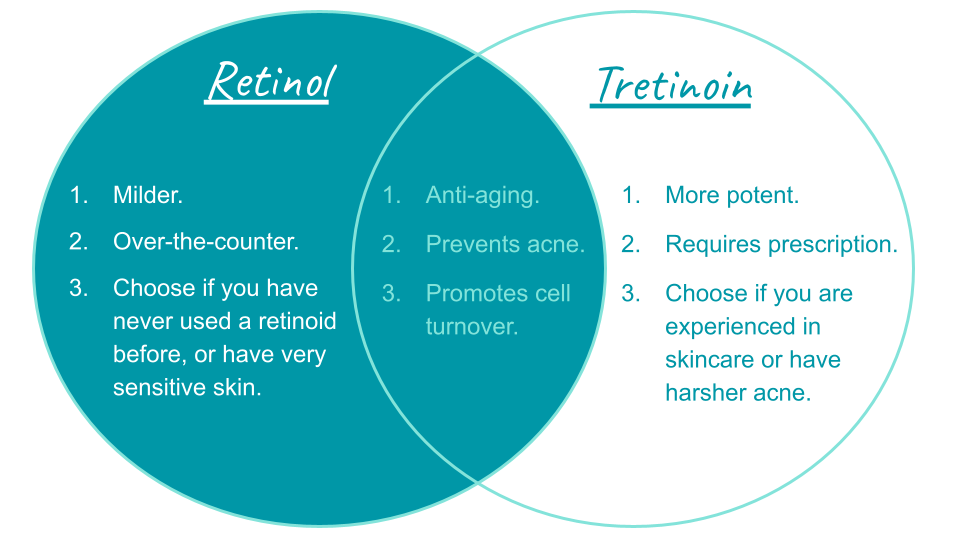
How To Use Retinoids (Retinol or Tretinoin)
Incorporate tretinoin into your nightly skincare routine to keep your skin clear and resilient. Apply it consistently in the weeks leading up to your flight for the best results. Use these steps when applying retinol or tretinoin:
- Cleanse: Start with a gentle cleanser to remove any impurities.
- Apply Tretinoin: Use a pea-sized amount and apply it evenly to your face. Avoid the eye area and corners of your mouth. A little goes a long way (really, you do not need a lot).
- Moisturize: Follow up with a hydrating moisturizer to avoid your skin drying out from the retinoid.
Why Retinoids Work For Preventing Post-Flight Acne
Retinoids work to prevent post-flight acne (and everyday acne) by promoting faster skin cell turnover over long periods of time. This helps keep pores clear and reduces the likelihood of breakouts caused by dry airplane cabin conditions. Retinoids also have anti-inflammatory properties that soothe skin stressed by the dry, pressurized environment of flights.
Retinoids are most effective when they are used on a consistent basis over long periods of time; the results are not overnight.
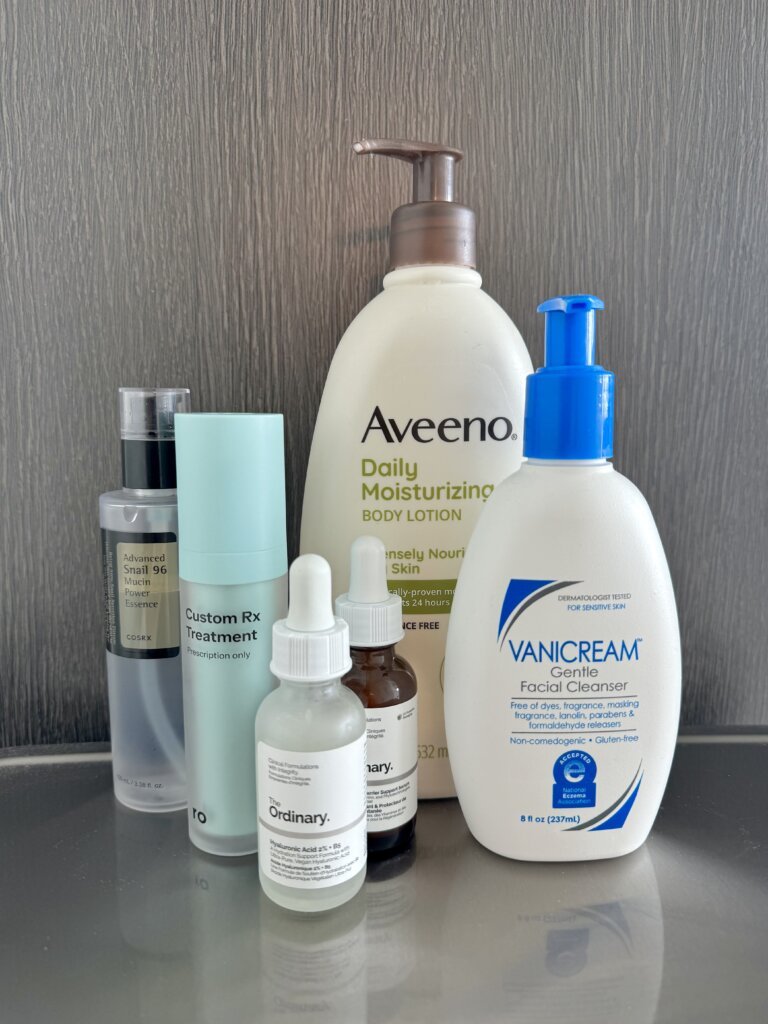
Important Things To Know When Using Retinoids
- Consult a Professional: Always talk to a dermatologist before starting retinoids, especially if you have sensitive skin or other skin conditions. This is very important!
- Start Slowly: Begin with a lower concentration and gradually increase usage to allow your skin to adapt. Try incorporating it once a week, and then slowly building in more days. Take a break if needed. Try “sandwiching” the retinoid if you experience sensitivity, by putting on a layer of moisturizer, then a layer of retinoid, then another layer of retinoid. Less is more.
- Apply at Night: Retinoids can make your skin more sensitive to sunlight, so use them as part of your nighttime skincare routine.
- Use Sunscreen Daily: Protect your skin with broad-spectrum sunscreen every day to prevent sunburn and damage. This is essential!
- Moisturize: Retinoids can be drying, so use a good moisturizer to keep your skin hydrated.
- Expect Initial Irritation: Mild redness, peeling, and dryness are common initially, but these effects usually subside as your skin adjusts. Remember, a little goes a long way.
- Avoid Mixing with Other Active Ingredients: Do not combine retinoids with other potent ingredients like benzoyl peroxide or AHAs/BHAs, as this can increase irritation.
- Consistency is Key: Regular use is essential for seeing long-term benefits, so stick to your regimen.
- Be Patient: Results can take several weeks to become noticeable, so don’t expect immediate changes. You’ll see results in about a month. It continues to get better with more time.
- Expect a Purging Phase: When starting retinoids, you might experience a temporary increase in breakouts as your skin accelerates cell turnover and clears out underlying congestion. This is normal and typically subsides within a few weeks. It actually feels good knowing you are purging out the bad stuff.
- Pregnancy and Nursing: Avoid using retinoids if you are pregnant, planning to become pregnant, or nursing, as they can potentially cause harm to the baby.
Step 2: Pre-Flight Prep with Tretinoin and Moisturizer
Moving on to step 2! Before you board your flight, give your skin a little extra shield. Follow these steps to layer your products for maximum hydration and protection before flying:
- Cleanse: Wash your face with a gentle, hydrating cleanser.
- Apply Retinoid: Just like your nightly routine, use a small amount of retinol or tretinoin. This will help to prevent congestion while flying.
- Slugging: Apply a thick, occlusive moisturizer or petroleum jelly to create a barrier that locks in moisture. This technique, known as slugging, helps prevent the dry cabin air from sucking the hydration out of your skin.
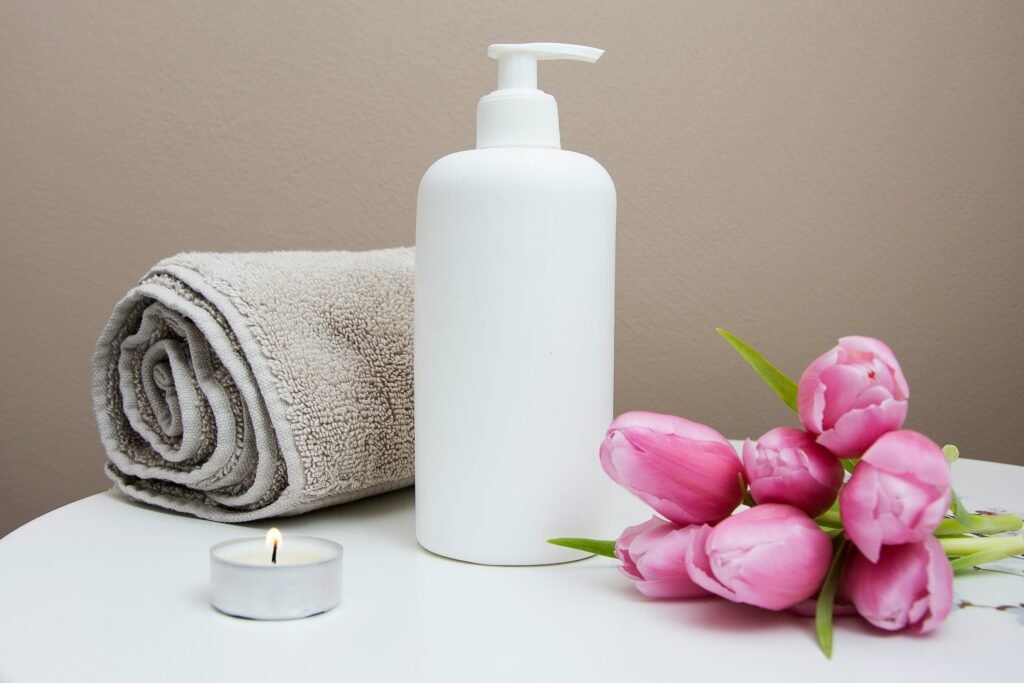
Step 3: Mid-Flight Freshen Up
Sometime during your flight (maybe at the halfway point) it is a good idea to re-moisturize. Here is what I recommend:
Pack a Hydrating Mist: A facial mist is one of the easier ways to get a quick hydration boost during the flight. Look for one with soothing ingredients like aloe vera or hyaluronic acid. This way you don’t need to worry about touching your face with airplane fingers.
Don’t feel like you need to go crazy with this. Simply put, if you feel dry then give your skin a spray. Some people recommend using a sheet mask mid-flight, but I think that is an unreasonable expectation on a plane and just looks a bit silly.
Step 4: Post-Flight Recovery
Once you’ve reached your destination, it’s crucial to cleanse your skin and then restore moisture. The airplane’s dry air and possible exposure to pollutants (aka that guy coughing next to you for hours) leave your skin in need of a reset. Here is what to do when you land.
- Cleanse: Use a gentle cleanser to wash away any impurities or remnants of your slugging layer.
- Moisturize: Apply a hydrating moisturizer to replenish any lost moisture and soothe your skin.
Additional Tips for In-Flight Skincare
- Stay Hydrated: Drink plenty of water throughout your flight to keep your skin hydrated from the inside out. Skip the coffee and alcohol.
- Avoid Touching Your Face: Minimize touching your face to prevent transferring bacteria and oils that can clog pores.
- Consider a Mask: I find that wearing a COVID face mask helps to keep some moisture in and helps me fly without worrying about getting sick. But for some people, the irritation of a face mask rubbing against their skin can counteract that. Do what makes you comfortable.
- Makeup: Wear as little makeup as possible, it can trap in oils and sweat.
- Stay calm: Flying can be stressful, and stress can lead to breakouts. Try to relax, walk around, and stay calm.
- Other: Wash your hands frequently! Make sure to pack small product bottles that can fly (<3.4 ounces). When traveling, try to eat and drink according to your normal habits.
Proof This Works
To prove this method is effective, here are some of my before and after photos showing the results of following these skincare steps. It really does work! These photos are all completely unedited (and of course, with no makeup).

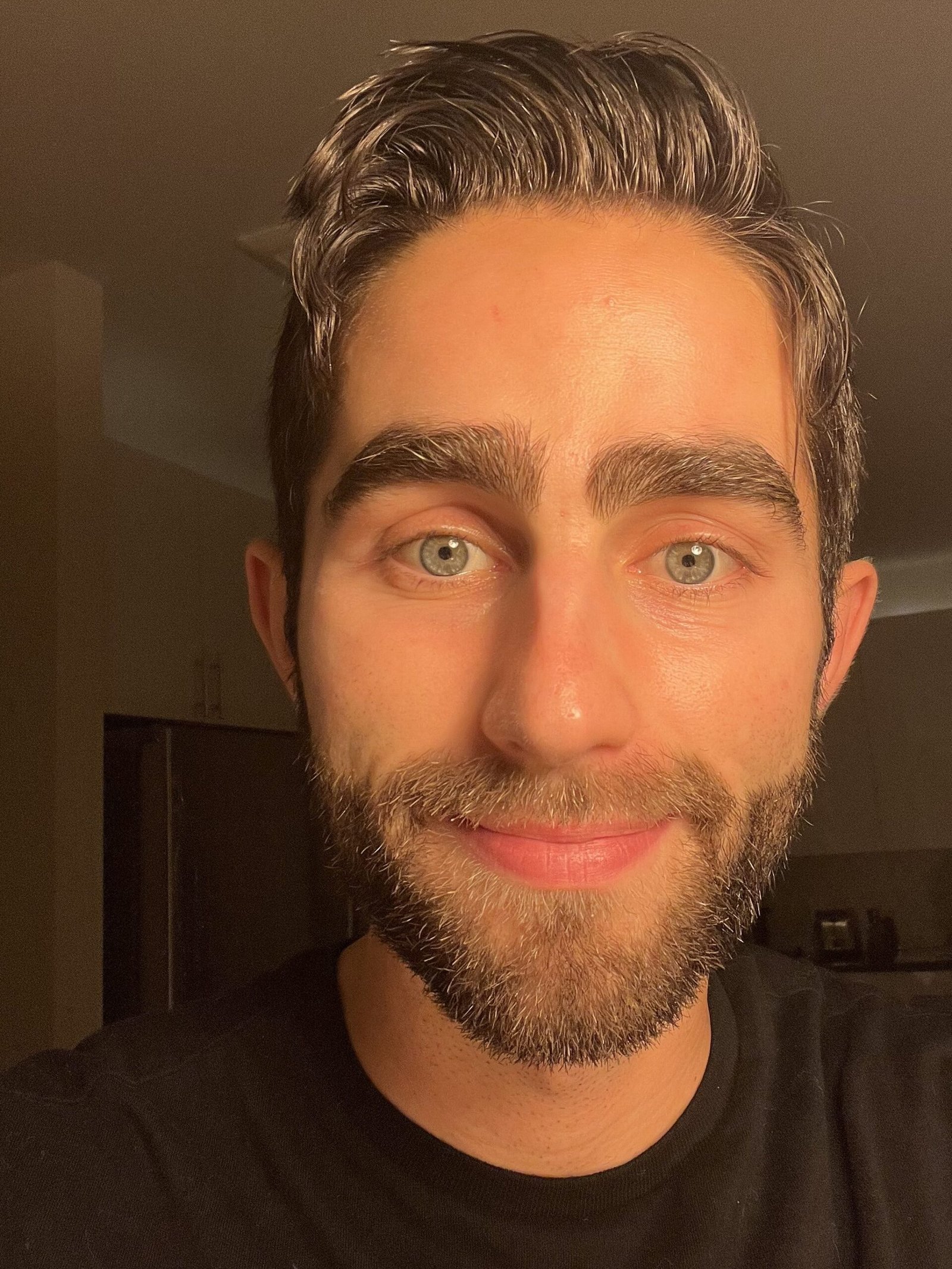
Here is another set of before and after pictures for good measure:
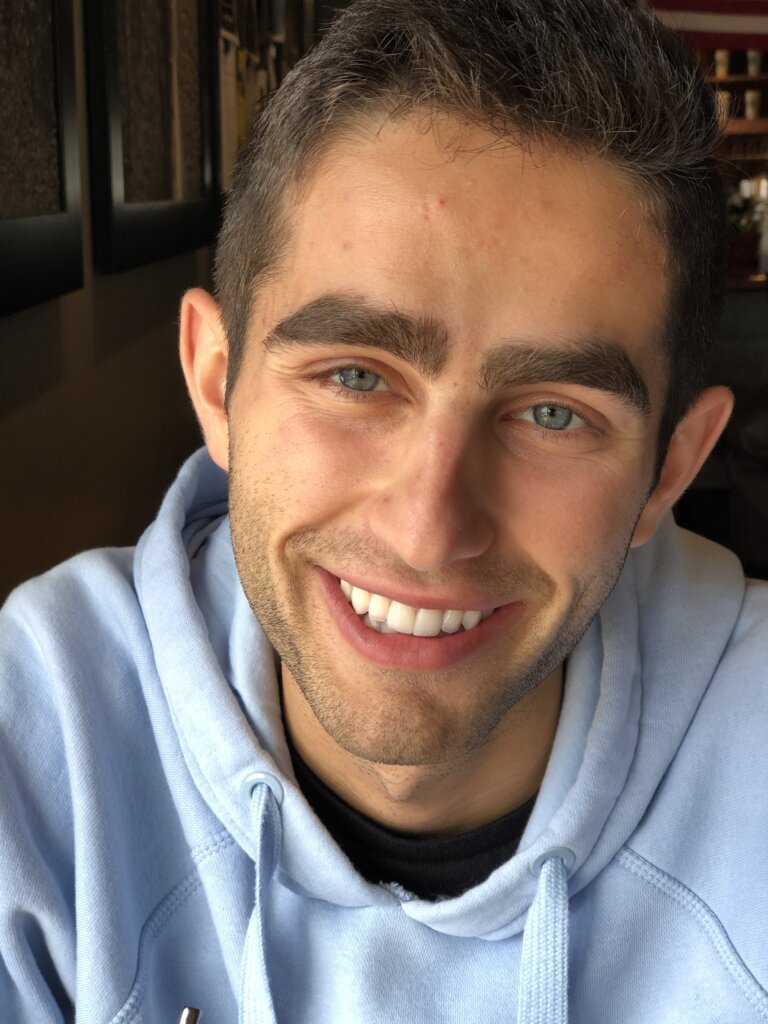
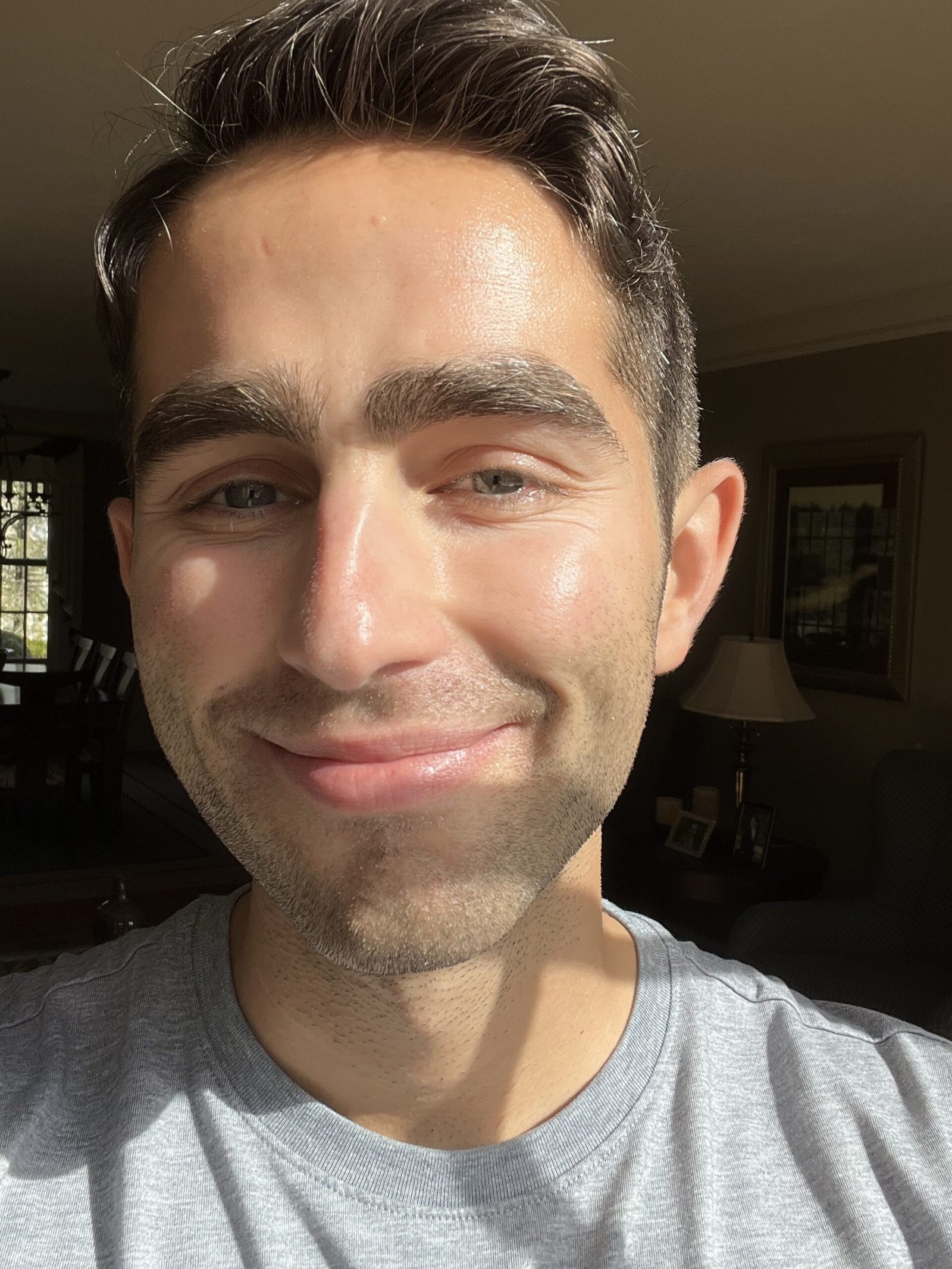
When All Else Fails, Embrace the Journey
Travel is amazing and it is imperfect. It is easy to get caught up in appearances and want to look your best when traveling because that is when so many photos are taken. But travel takes you out of your normal comfort zone and routine. Stressing about how your skin looks can lead to it looking worse.
My best advice is to do what you can, and then not worry about it. You will have a better time for it. Sometimes no matter how hard we try, blemishes still happen because we are all human. They are temporary, and what matters is that you have the ability to be traveling!
Embrace the imperfections! They are what make you and your travel experience special.
Product Recommendations
Throughout this article, I mentioned a few simple skincare items. I’ve tested more products than I can count. If you are interested, here are my recommendations for what I have found and tested to work best to avoid breakouts when flying. Make sure to patch-test new products before applying them.
Tretinoin: You can talk to your dermatologist to get a prescription for tretinoin, and then fill it at your local pharmacy. Your insurance can be used if you use this method, which is likely best for most people. Remember, the key here is consistency, not percentage strength. You can also use an online dermatologist such as Roman, Apostrophe, or Curology. Note that these online brands typically do not accept insurance and are more expensive, but comes with other benefits.
I have used varying strengths from both a generic prescription from a pharmacy, as well as from the online dermatologist Roman. The Roman 0.015% tretinoin is my favorite because it has niacinamide in it (a superstar ingredient that actually helps your skin), smells better, applies more smoothly, and is not too high of a strength percentage. I like that I can message someone about it any time too with questions. The price I pay for Roman is $58 per tube. This may sound expensive, but it lasts me about 5 months because I only use a small amount each night.
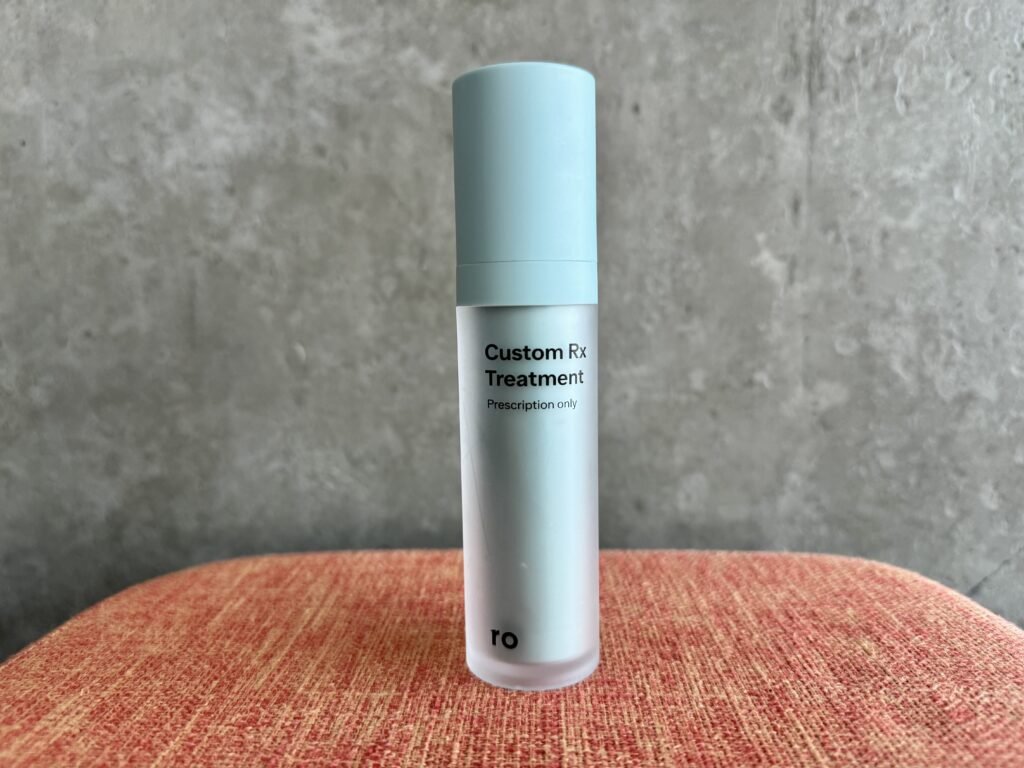
Retinol: The Ordinary sells a bunch of my favorite skincare products, and I like their brand overall. I think the retinol they sell is excellent, particularly because it is suspended in vegan squalane. This basically is an oil-free substance that helps to moisturize as traditional oils do. This means that you will experience less redness and dryness, which is why I love it.
Cleanser: My all-time favorite cleanser is from Vanicream. It has absolutely nothing potentially harmful or irritating added to it, including no oil. You can’t beat this stuff. It is affordable and lasts forever. In my opinion, the key to cleansing is simplicity and gentleness.
Moisturizer: Aveeno always and forever. It is a basic calming moisturizer that is affordable and does the job and does it well, with no extra nonsense. I use this on my body and face and have been for years. Every other moisturizer I use just overcomplicates things.
Slugging Moisturizer: My favorite product for slugging is the COSRX snail mucin moisturizer. It contains snail mucin and hyaluronic acid, which both help to trap moisture in your skin and leave it refreshed. It has a good consistency for slugging (although I call it “snailing” instead of “slugging”). I use this product before going to bed or before flying. I was scared of the snail mucin at first, but it turns out it really works great; I recommend giving it a try (and don’t worry, the snails aren’t harmed in the making of mucin). You can also use Vaseline, but I prefer to avoid petroleum products.
Hydrating Mist: I use the Avene Facila Mist, a French brand that uses thermal spring water in its products. It fulfills the role I need it to perfectly. Your skin feels great after spraying, especially mid-flight. I found this product at a pharmacy when studying abroad in France, and have loved it ever since.
Sunscreen: I love the Supergoop unseen sunscreen. It is clear, has a Vaseline-like consistency, and applies so easily. It gets rid of the terrible parts of sunscreen and makes me not mind using it at all. It is the only sunscreen I will use for my face. Secret tip: Trader Joe’s sells a dupe for only $10 that works just as well!
Frequently Asked Questions (FAQs)
1. What causes airplane acne?
Airplane acne is caused by the dry, recycled air in the airplane cabin, which can dry out your skin. This leads to increased oil production, clogged pores, and breakouts.
2. Should I use retinol or tretinoin?
If you are new to retinoids, I recommend starting with retinol, which is milder and available over the counter. Tretinoin is stronger and requires a prescription, making it suitable for more severe acne or anti-aging needs.
3. How do I incorporate retinoids into my skincare routine?
Apply a pea-sized amount of retinoid to clean skin at night, followed by a moisturizer. Use sunscreen daily because retinoids can increase sun sensitivity.
4. What if these methods don’t work?
There are many factors that impact your skin’s condition, like diet, stress, exercise, and more. These methods will help to prevent blemishes resulting from flying, but skincare is complex and it might not work for everyone. Do what works best for you. There is no magic potion to perfect skin.
Conclusion – How To Get Rid of Airplane Acne
Airplane acne can be a frustrating part of traveling, but it doesn’t have to be inevitable. By understanding the causes and following this strategic skincare routine, you can keep your skin clear and healthy even after long flights. Use retinoids, keep your skin moisturized, and cleanse thoroughly post-flight.
Remember, these methods may not work for everyone, as skin is individual and there are infinite factors that go into how your skin looks on any given day. So give it your best and then don’t stress over occasional blemishes – they are a temporary and natural part of life.
Have a safe flight!
Disclaimer: This article is intended for informational purposes only and should not be considered medical advice. Always consult with a dermatologist or healthcare professional before starting any new skincare regimen, especially if you have sensitive skin or existing skin conditions. The author and publisher are not responsible for any adverse effects or consequences resulting from the use of the products or procedures recommended in this article.
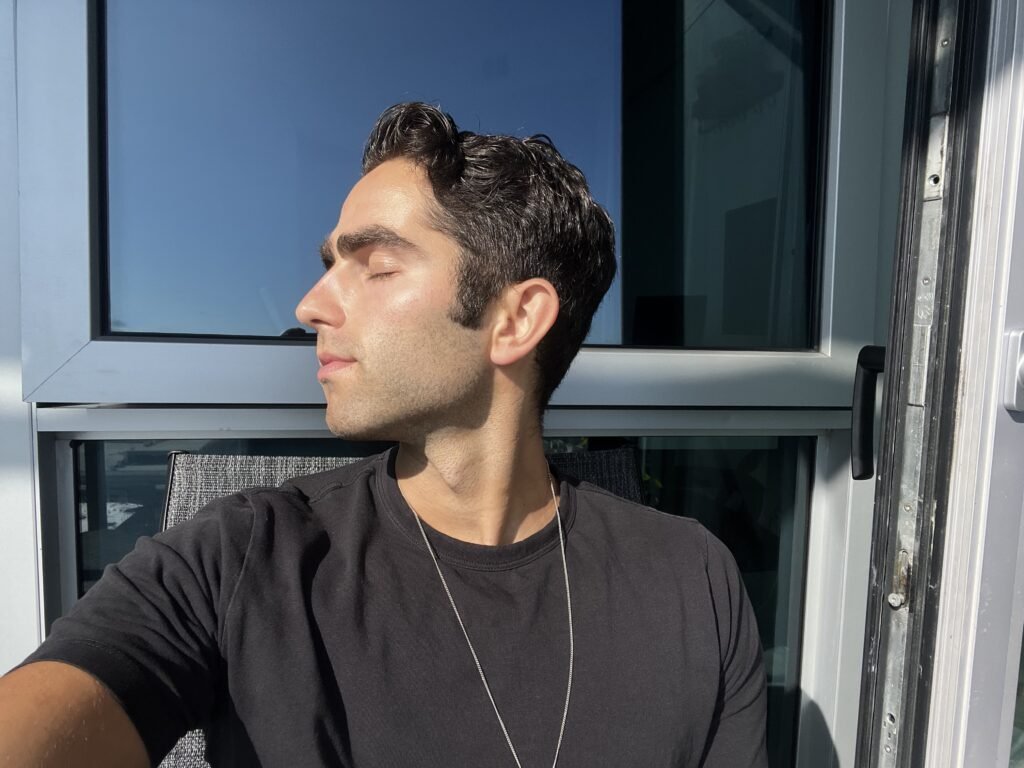
Last Updated:
Disclaimer: This article is intended to be for informational purposes only and may contain affiliate links. Refer to the full disclaimer for more information.



